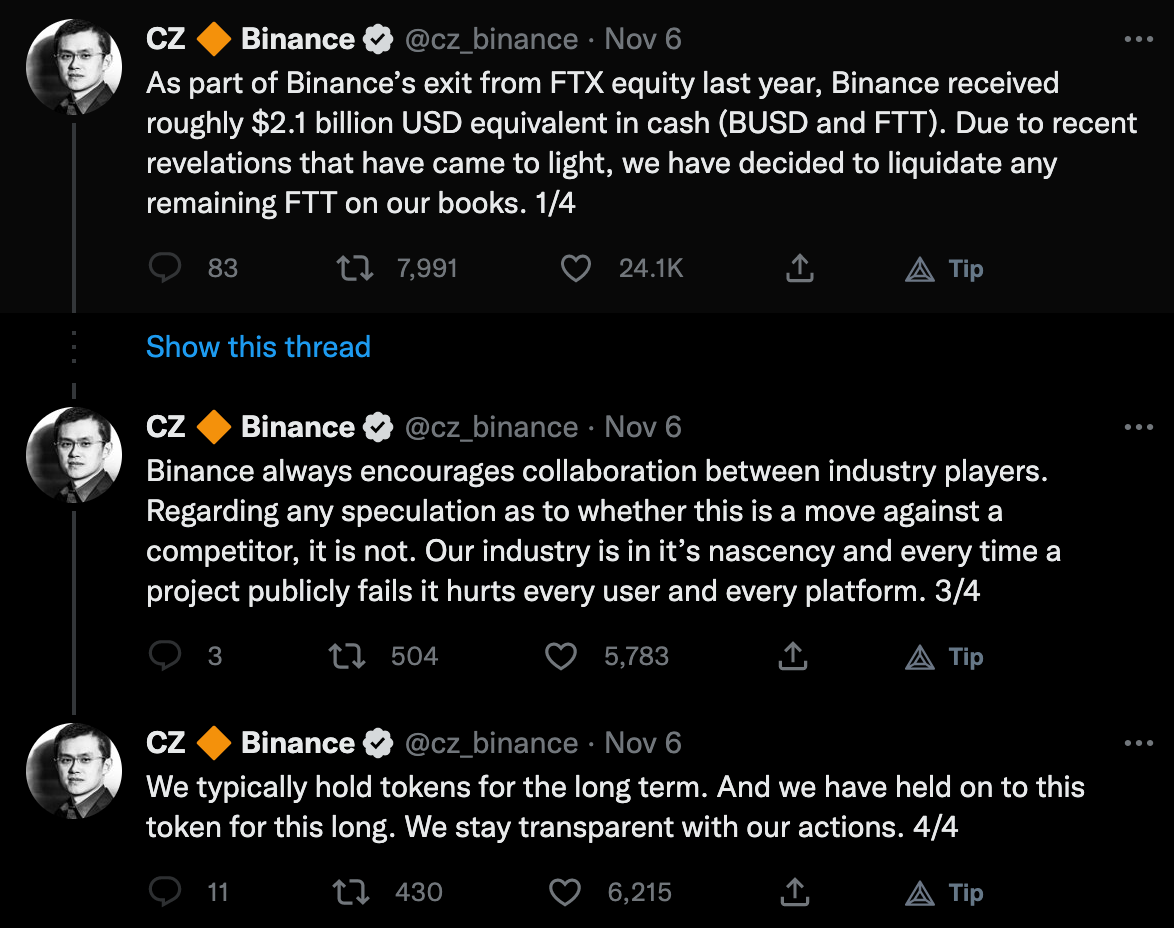Part 2 - What is FTX and SBF - and why does everyone keep talking about it?
In this part I go into my thoughts on the details of this real time drama
So we established that there was atleast more than 1 red flag in how rapidly the crypto space had been “growing” over the last 2 years in part 1 here - now let’s try to zoom into the FTX microcosm here.
A 35000 ft view on who SBF is:
1992: Born in March to Stanford Law professors - both parents connected at the highest echelons of the US government
2010-14: Went to MIT - got a degree in Physics and Mathematics
2015-16ish: Worked at a trading firm trading international ETFs for a year or so
2016-17: Moved to Berkley to become the director at the Centre for Effective Altruism (I’ll let you google that one)
2017: Founded Alameda Research - a quantitative trading firm along with Tara Mac Aulay from the Centre of Effective Altruism
2018: Organized an arbitrage trade, moving ~$25M per day - leveraged the higher price of bitcoin in Japan relative to the US to make profits
2018: Attended crypto conference in Macau - moved to Hong Kong
2019: Founded FTX - a crypto derivatives exchange in April - launched it in May
2020-22: FTX grew like nobody’s business - with revenues going from $90M in 2020 to over $1B in 2021. SBF purchased 7.6% of Robinhood Markets, Inc. stock during this time through Emergent Fidelity Technoologies Ltd., which is majority owned by SBF. He also became the face of bringing regulations to crypto during this time period - working closely with government, invested over $500M in VC firms, and even offered to help Elon Musk with the Twitter acquisition as recently as in April 2022, by committing upto $5B
So effectively a guy who went to MIT to study physics, worked a year at an investment firm, got into some charitable cause for another year, and then - as is only natural in the sequence of these events - dedicated his life to the service of others?
No. He decided to start trading millions of dollars worth in Bitcoin a day.
And then finally, proceeded to found his own crypto exchange … one where real people can put in their real hard earned money in hopes of a better future - through a little arbitrage of their own. What could possibly have gone wrong.
So how did this legend of a man-child manage to loose the crypto industry over a trillion dollars (and counting) in 48 hours? Well heres an attempt at explaining this …
So imagine that a company (like FTX) creates a hypothetical token (like FTT). The company can then give this token an artificial value by giving it some utility, vague use cases, oh and a whitepaper, gotta do the whitepaper ofcourse.
Now that this magic money (token) has value, this company can hypothetically start buying up the majority of the token’s supply and begin burning the rest to push it’s value up.
So to summarize and simplify, FTX (allegedly) created tokens (FTT) out of thin air, used econ 101, played with it’s supply to build demand, while surfing the hype wave of whitepapers and perceived utility to give these tokens “real” value in the market place - effectively making it an asset.
FTX can allegedly and hypothetically send this asset to their sister company (Alameda Research LLC) - where the sister company could show FTT as an asset on their balance sheet. Now that these magic tokens have been dressed up as assets on a balance sheet, they can be leveraged by the sister company to borrow assets (like Ethereum, bitcoin, etc.) against FTT as collateral. Once they’ve got these assets - they can transfer them right back to the token creator (FTX/brother company?) …. and so goes the infinite money glitch.
I’m going to want you to read those two paragraphs again … it’s insane that this is what allegedly happened!
This could explain why the value of FTT token had such a huge impact on FTX’s ability to liquidate. But why did FTX want to liquidate in the first place? Great question … let’s go back to what might prove to be the most expensive tweet in history (for SBF anyway).
So Binance is essentially another, much larger crypto exchange - possibly the largest competitor of FTX (before it turned out to be a giant ponzi scheme ofcourse) and Changpeng Zhao (CZ) is their Singapore based CEO. On November 6, CZ tweeted about his decision to liquidate all FTT on their (Binance’s) books as a result of “recent revelations that have come to light”.
This is a pretty significant tweet, because considering that Binance is a large exchange, them dumping large volumes of FTT tokens would drop the price of FTT significantly (sudden increase in supply).
Also, you can safely assume that pretty much the entire crypto space began asking the question - “what does CZ know that we don’t”, causing tonnes of folks to start to liquidating/wanting to liquidate their FTT, dropping the token value even further.
Now - going back to the reason why this sudden drop in FTT value had such a huge effect on FTX’s ability to liquidate. If there is a run on the bank where everyone tries to sell all of their tokens - implying wanting dollars upon sale of said tokens - then it’s time to pay up! But if the platform no longer has the customer’s money to pay, which FTX didn’t because they had further lent it to other institutions, then they will have to liquidate their own assets, which in this case would be their magic FTT tokens, that were losing value rapidly.
This is especially disheartening because FTX explicitly guaranteed the backing of each customer dollar for their dollar, and not engaging in lending customer money. Lies.
So when the selling pressure kicked in, FTX went ahead and froze roughly $6B worth of customer withdrawals, at which point Binance decided to play the God card and offered to buy up FTX, pending due diligence (for $1 allegedly!). Obviously, everyone was very hopeful that this acquisition goes through as billions of crypto dollars depended upon this due diligence to go through. It did not.
It took Binance less that 24 hours to find out how messed up the FTX books really were, and they backed out of the acquisition.
As soon as this happened, the price of Bitcoin and Ethereum collapsed and Solana lost roughly 45% of it’s value because of the close SBF association. Matter of fact, anything that FTX had touched started to free fall in value.
SBF has filed for personal bankruptcy and owes more than $650M to his creditors at this point.
Ofcourse, this story is developing everyday, and there are a lot of critical bits that I haven’t mentioned - like Binance offering $1 to acquire FTX (pending due diligence), or the sheer inexperience of everyone at Alameda Research, or the effective altruism BS that SBF pushed to justify his behaviour, or the blatant lies he spewed in congress in pushing for stronger regulations against the very activities he was neck deep in, or the truly tragic loss of real hard earned dollars of the customers that took a chance in hopes of a better life.
All in all SBF might be the conman of this decade - but then again we’re only in 2022 and this decade has been pretty epic (not in a good way) so far so let’s see.
So that’s where we are at this point in time with reference to what has happened so far, but what does all this mean for the future, and is crypto just a ponzi scheme afterall?
Those are the two questions I will explore in my final part to this FTX/SBF trilogy.



